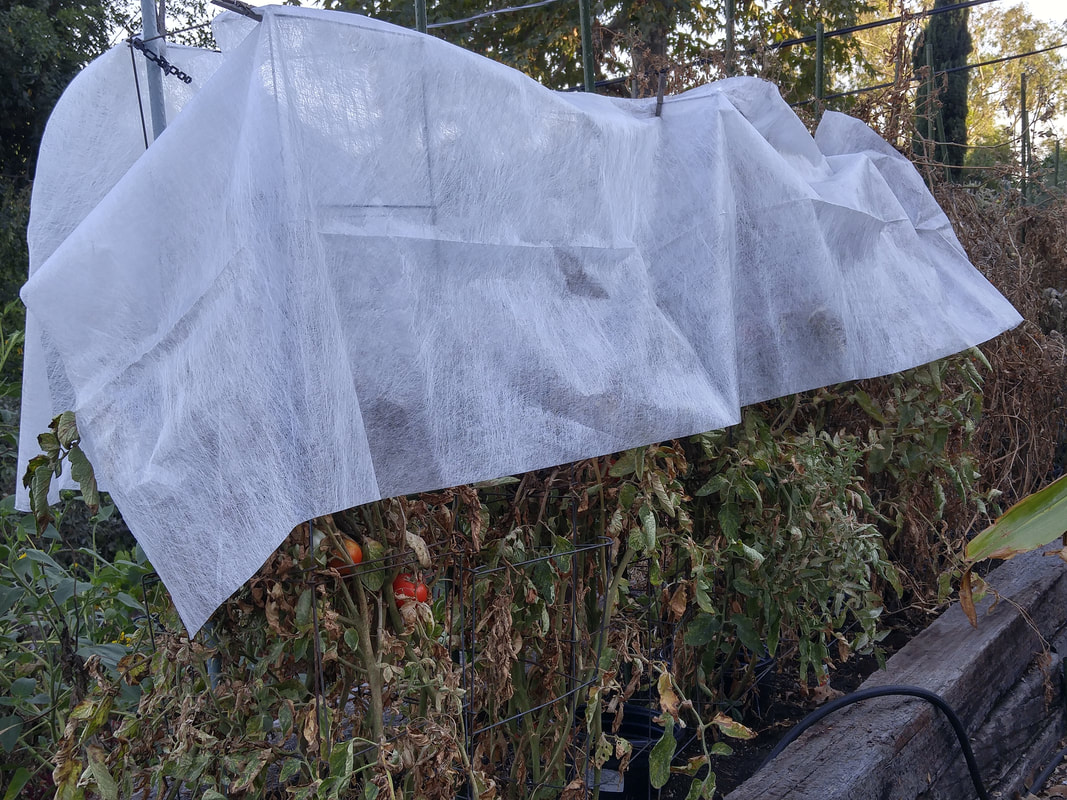 It's 114 degrees at this moment, 6:15pm on September 5, when I can take photos because the sun has set over the back hill. I'm SO VERY THANKFUL that my folks chose this property - facing northeast looking at the Mt. Wilson and Mt. Baldy mountains - so we get the early morning through late afternoon direct sun, but we escape that later blasting summer sun. I placed the spunbonded polyester fabric over my still-bearing tomatoes to cover the foliage as the sun moves through the day. 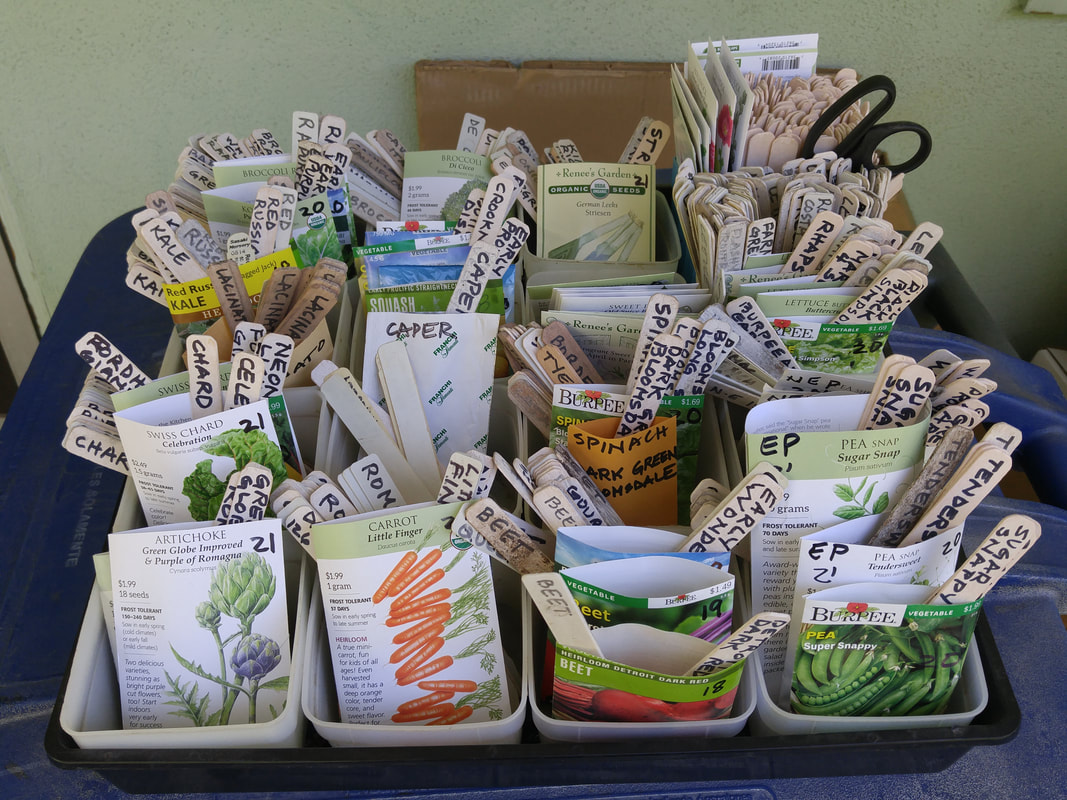 My nursery tray of seeds arranged in containers by type (as lettuce) and then alphabetically by variety name. On the 6" wood pant labels with permanent Sharpie markers, I've written the type - "lettuce" - on one side and the variety name on the other. For peas, I distinguish between edible pod (which I prefer) and non-edible pod (which my husband prefers - so I don't try to eat his pods, and he doesn't throw away my pods! 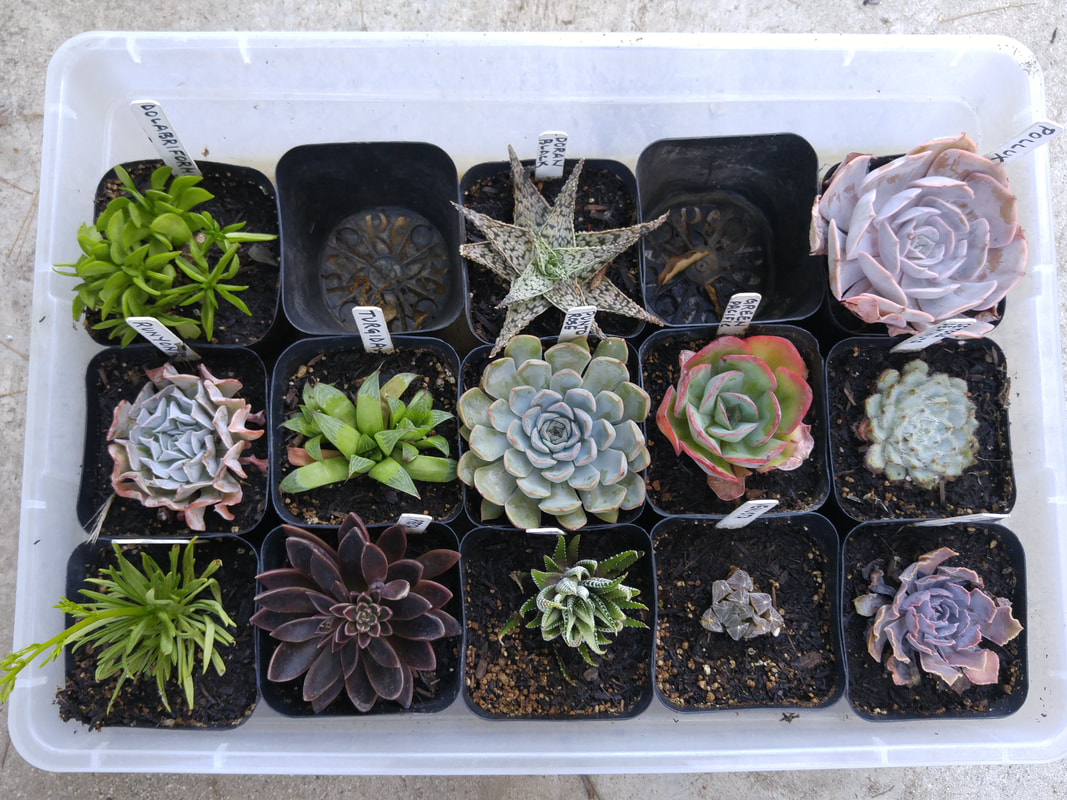 Trayful of succulent treasures from mailorder SucculentMarket.com . I highly recommend this vendor - lots of variety, and opportunity to purchase just cuttings as well as potted-up plants that are well-rooted. Because cuttings root so easily, and the selection - including collections - is so broad, it's a great resource. Fuyu persimmon putting out two differently-shaped fruits - pointed ones like Hachiya on left, and regular flat Fuyu on right. | Boy, what a way to blast into our cool-crop growing season - with threatened 115-degree heat for this weekend here in Pasadena. Certainly brings back torrid memories of 116- degree heat a couple of years ago that fried a batch of my tomato plants, even with the deep watering I'd accomplished several days ahead of the blast. So, first off, go deep-water your garden NOW so the moisture can sink down to infuse the entire root system of whatever plants you still have producing in the garden before the heat actually hits. For some of you, that's tomorrow. For me in Pasadena, it's apparently Saturday, Sunday, and Monday. Second helpful measure to take before the heat is to cover plants lightly with cheesecloth or some sort of shade cloth, spunbonded polyester landscape fabric that will allow some light in but cut the blasting rays of the intensely hot sun. After the heat, the first thing to do is sprinkle the entire plants to help them rehydrate their leaves, spraying both topsides and undersides of all foliage. I'd leave the cloth coverings on the plants for at least another week or so so they're not subjected to more intense sun now that they've been damaged. Also, deep-water to make sure root zones are fully hydrated. However, DON'T prune any dead-looking leaves and other damage that may appear next week. You don't want to stress the plants even more by cutting off any browned foliage. Despite any need you may have to neaten up affected plants, wait until you see new growth emerging - which may be more than a month - to see what actual damage occurred. You'll be surprised how much more new foliage will appear in the areas that you thought were dead. That's the time for you to trim off the dead stuff and even up any wayward growth. More on this after the blast! Transition Time in the Garden September and March are Southern California’s transition times in the garden, beginning their shifts from hot to cold crops (September) or cold to hot crops (March). The hangers-on plants from the previous season are still producing but slowing down. Seedlings for the coming season are just becoming available at stores, and seeds will begin germinating because of the changing air and soil temperatures. But because we don’t know what kind of weather the next couple of months will bring, we can sow and transplant a last batch of warm-season crops like beans and cucumbers, okra, pepper and squash – as long as their maturity dates are no more than about 70-80 days, by which time it certainly (!) will be too cool for them to ripen properly. And if the weather gets too cool before them, at least we tried a few in case the weather would have complied. If you want to concentrate now on starting cool-season crops, it’s time to get the soil beds cleared and amended so they can “cure” for a couple of weeks of microorganism activity before sowing and transplanting. The mixture of manure and compost and other amendments like coffee grounds that have been incorporated and well watered will heat up as the microorganisms do their thing; when the soil feels comfortable again after a couple of weeks, you can sow seeds and transplant seedlings without risk of overheating them. So spend time now purchasing seeds of the crops you’ll be sowing. The seeds of crops that will germinate at the top optimum soil temperature range of 85 degrees include asparagus, beet, bok choy, broccoli, Brussels sprouts, cabbage, carrots, cauliflower, Swiss chard, collards, kale, kohlrabi, leek, onion, parsley and radish. So, sow these as soon as you can. Crops whose top range is a bit cooler – 75 to 80 – include amaranth, artichoke, arugula, fava bean, celery, endive, fennel, lettuce, mache, mustard, parsnip, pea, radicchio, rutabaga and spinach. So wait another month or so to sow these. All of these have minimum temperatures down to 60 or 70 degrees, so keep repeat sowing them through the fall and winter and early spring for continuous harvests. If you have seed packets that are a couple of years old, the seeds may still be viable but with a lower germination rate, so sow them pretty thickly to see if you’ll get enough to germinate for your family’s use. Keep seedbeds moist and shaded from hot afternoon sun until the seedlings develop two to four true leaves. Mulch the soil lightly to hold moisture for better germination Several companies offer individual varieties and collections of California wildflowers that are grouped by color or geographic area or other characteristics such as drought resistance. Bulbs to plant for spring bloom can be purchased now for first-choice quality. These include alliums, amaryllis, anemones, brodiaeas, crocuses, daffodils, freesias (so fragrant!), fritillarias, galanthus, baby glads, glory-of-the-snows, grape and Dutch and wood hyacinths, Dutch irises, ixias, leucojums, lycoris, montbretias, narcissus, paperwhites, peonies, ranunculus, scilla, snowdrops, sparaxis, tigridia, tritonia, triteleia, tulips, dog-tooth violets, watsonias, and winter aconites. Choose big, plump bulbs, as these have the most stored food and will produce the largest and most numerous blooms over the longest period of time. They cost a bit more, but they'll provide a great deal more pleasure when they bloom. Refrigerate hyacinths and tulips for six to eight weeks before planting them in November. However, keep them away from apples and bananas, whose ethylene gas will destroy the flower bulbs ability to bloom. More Garden Tasks For more garden tasks, see September Monthly Tips. |
|
7 Comments
As always, I am envious of all of your beautiful plants. I actually had a bulb blossom and discovered that it is probably an amarcrinum. I'd thought it was dying since the foliage looked so awful, but suddenly there was a spike, followed by another about a week later. Thank you for sharing your knowledge and experience. It is much appreciated!
Reply
9/5/2020 10:13:54 pm
Hi, ELF -- Definitely wait a whole season when you think some bulb has died. I learned this with a Belladona Amaryllis at the first house my husband and I rented -- it had leaves when we moved in, then seemed to disappear for months, then suddenly had this spike with the pale pink flowers, then died back again. It took me a whole year to figure out that it was the same plant and definitely hadn't died!
Reply
Millie
9/7/2020 11:44:29 am
Hi Yvonne, always love your posts. How do you keep rodents from eating your tomatoes?
Reply
AI
9/13/2020 10:59:04 pm
Thanks so much. Was looking for this for my garden in Encino, all very well said and by the looks of it done. Will continue to follow to this blog, thanks again!
Reply
George
9/13/2020 11:01:51 pm
Very cool and useful info!
Reply
10/24/2020 03:52:40 am
I loved your blog and thanks for publishing this about transition time in the garden!! I am really happy to come across this exceptionally well written content. Thanks for sharing and look for more in future!! Keep doing this inspirational work and share with us.
Reply
Yvonne Savio
10/24/2020 10:09:53 am
Hi, Site Works -- Great to have you enjoy my experiential ponderings! That's the whole point! I hope you've subscribed so you'll receive my info as I send it out -- just email me at [email protected], and I'll add you to my emailing list!
Reply
Leave a Reply. |
Categories |

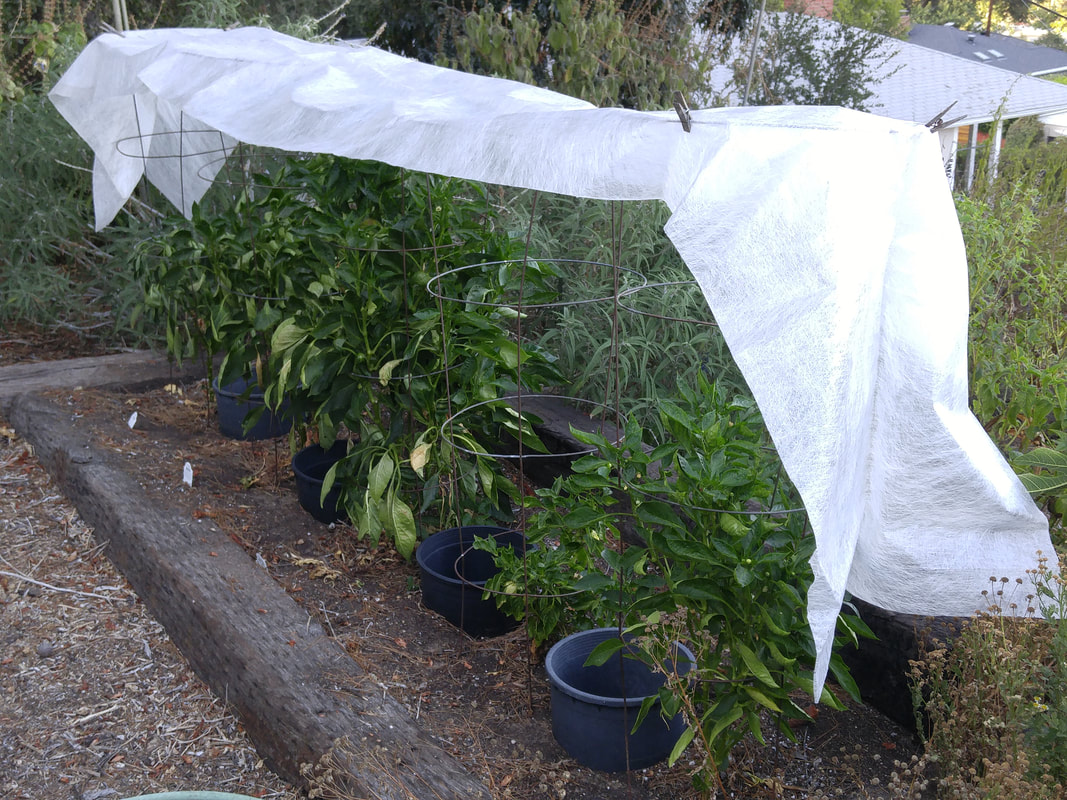

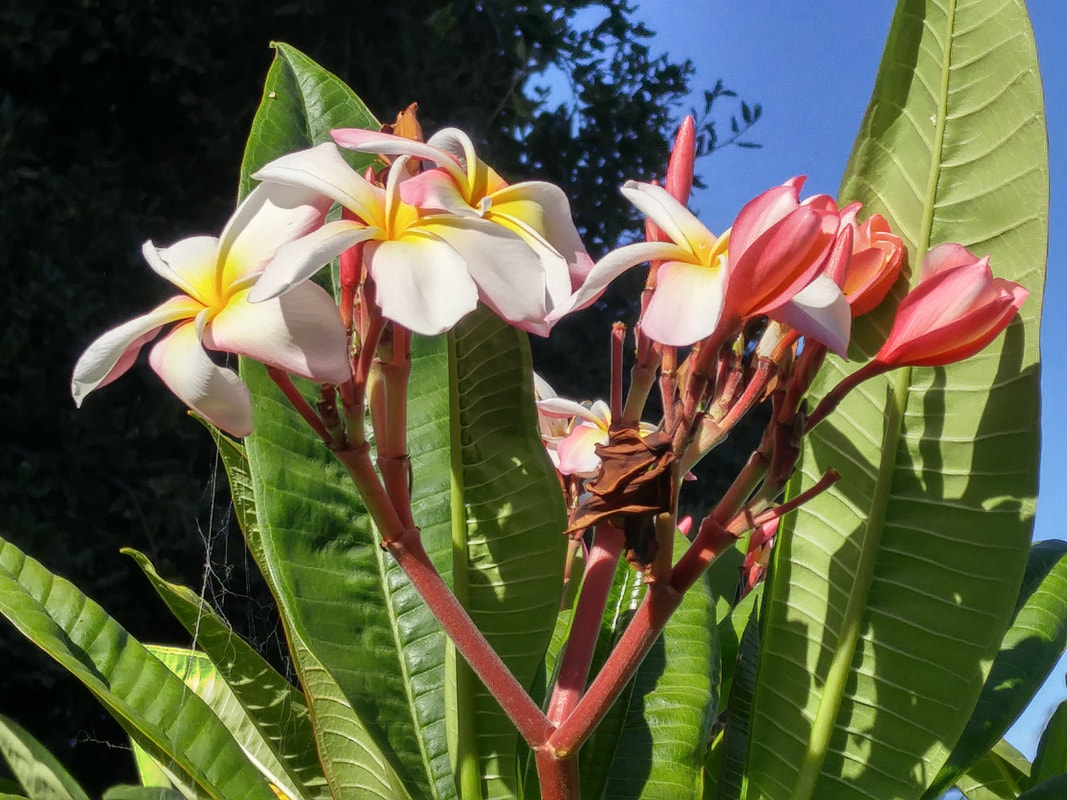
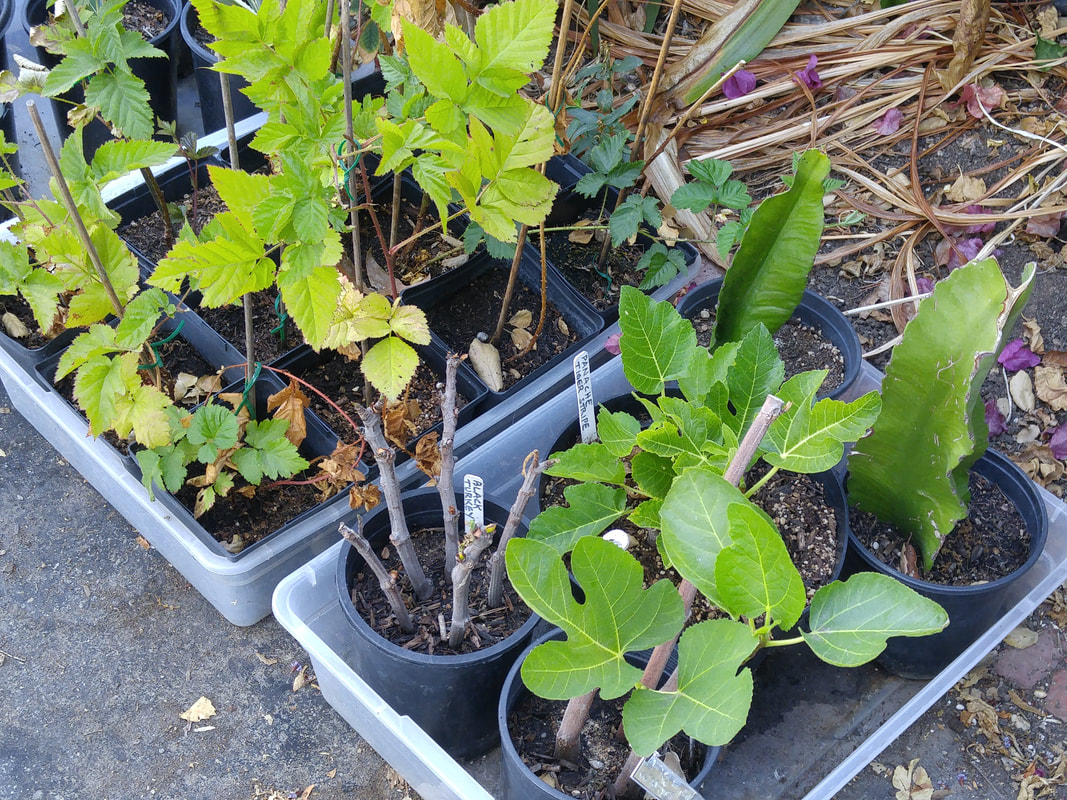

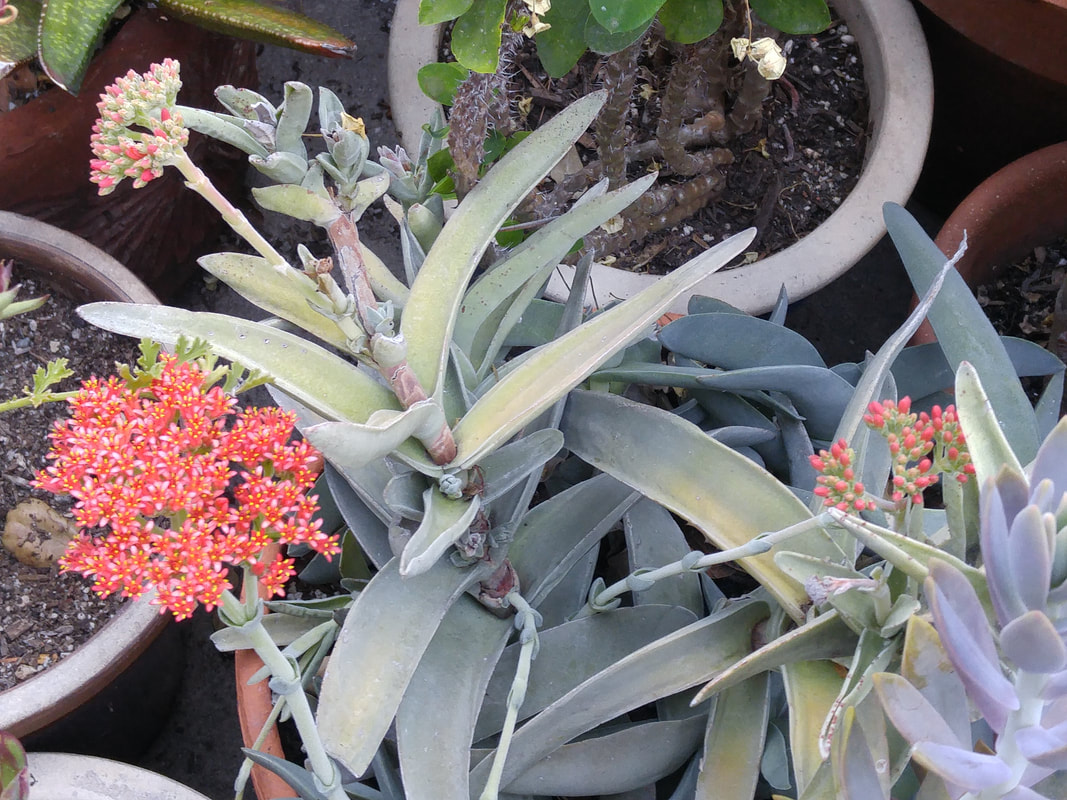
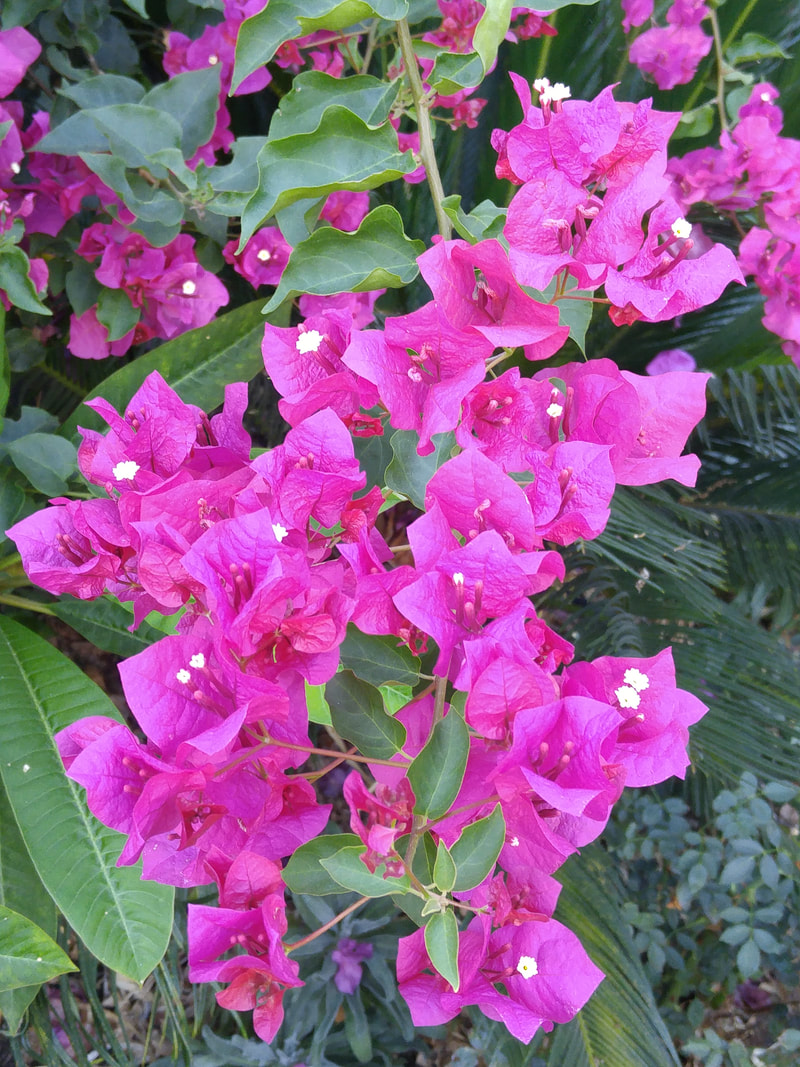
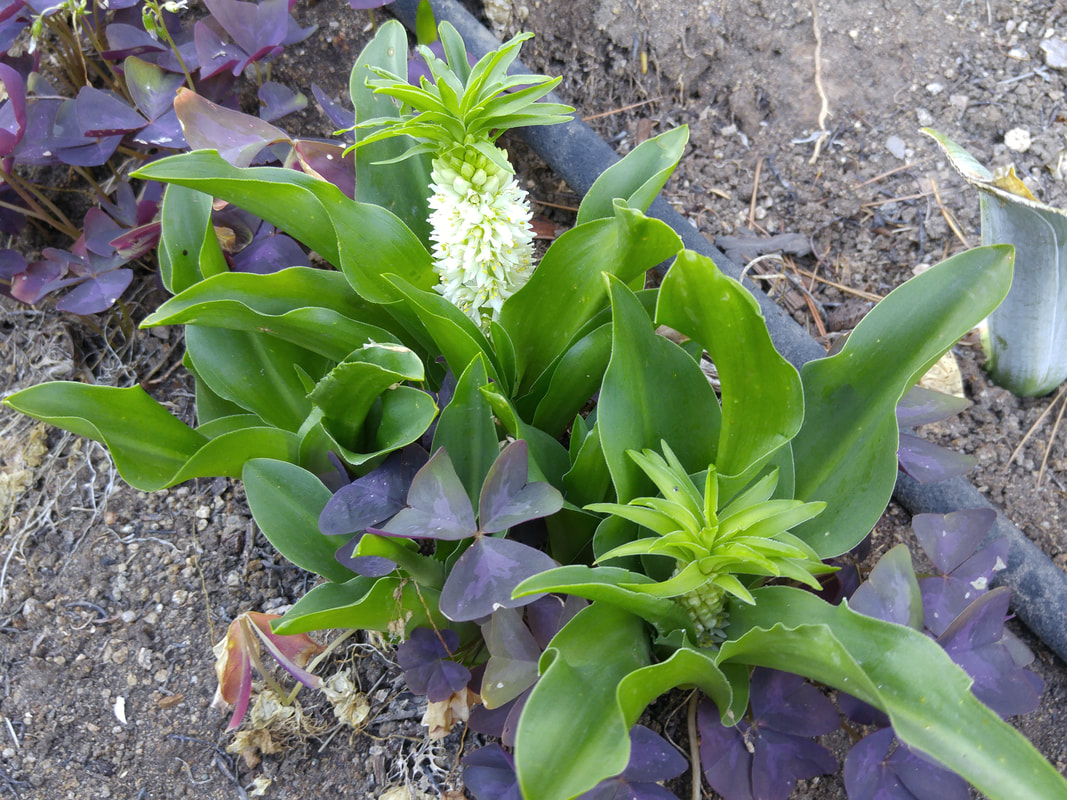
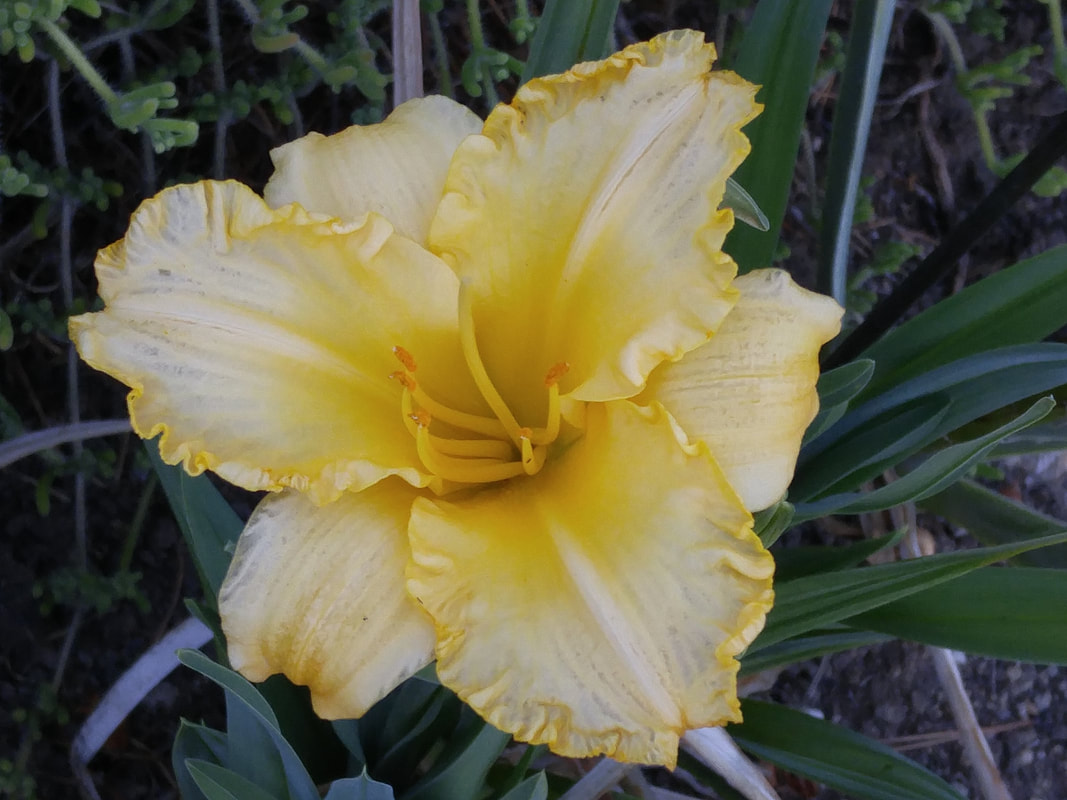
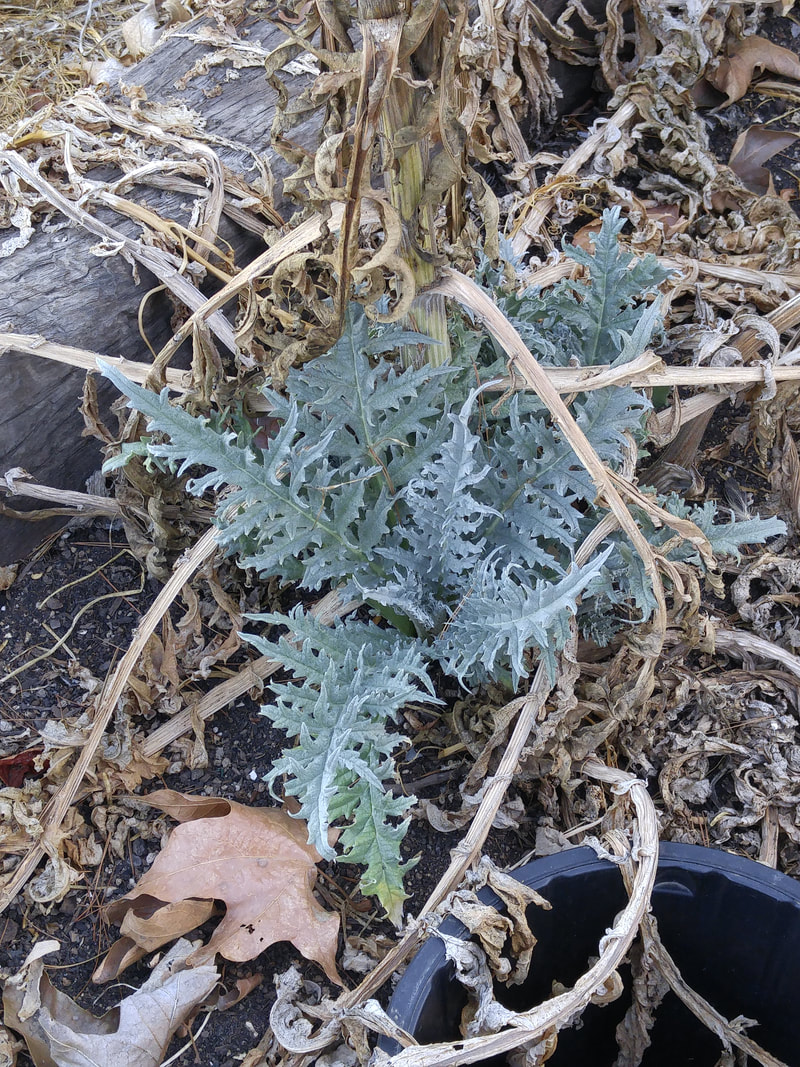
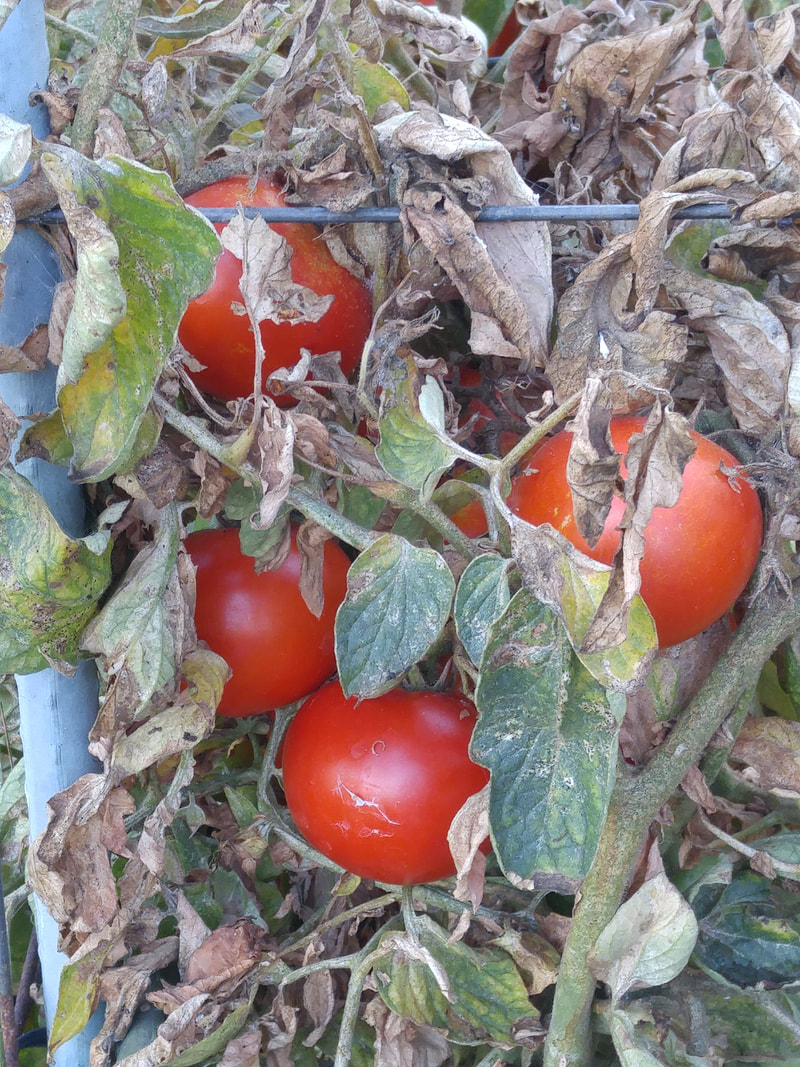
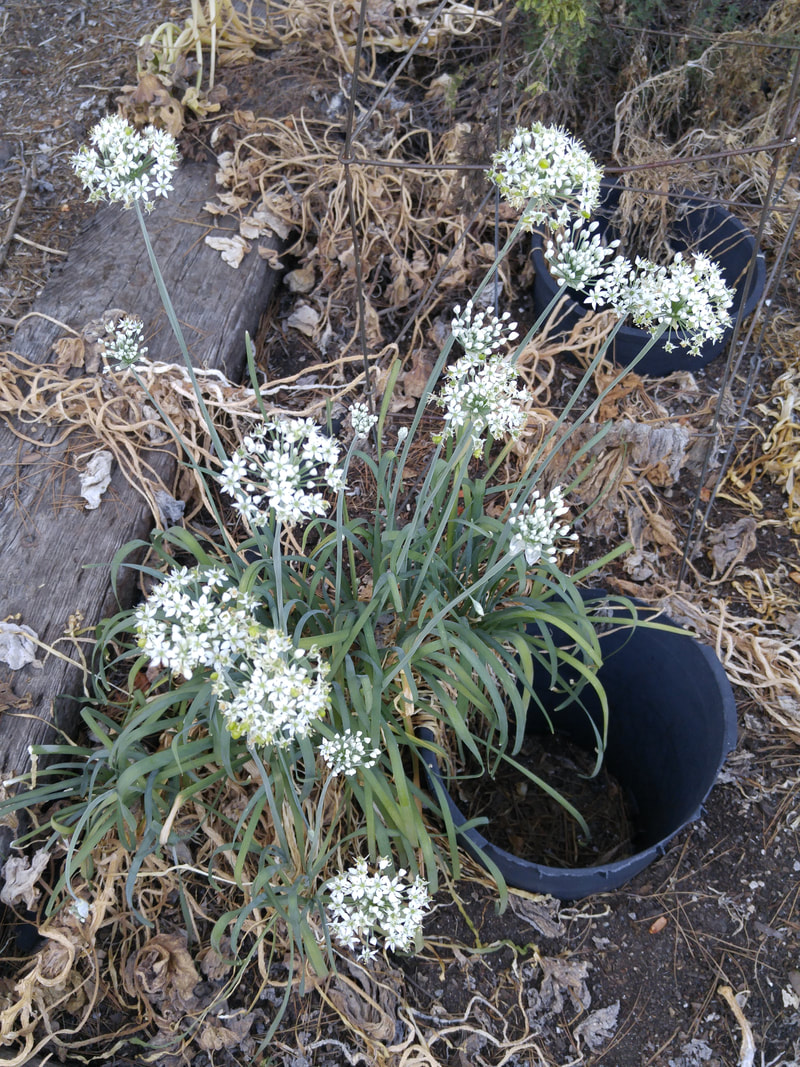
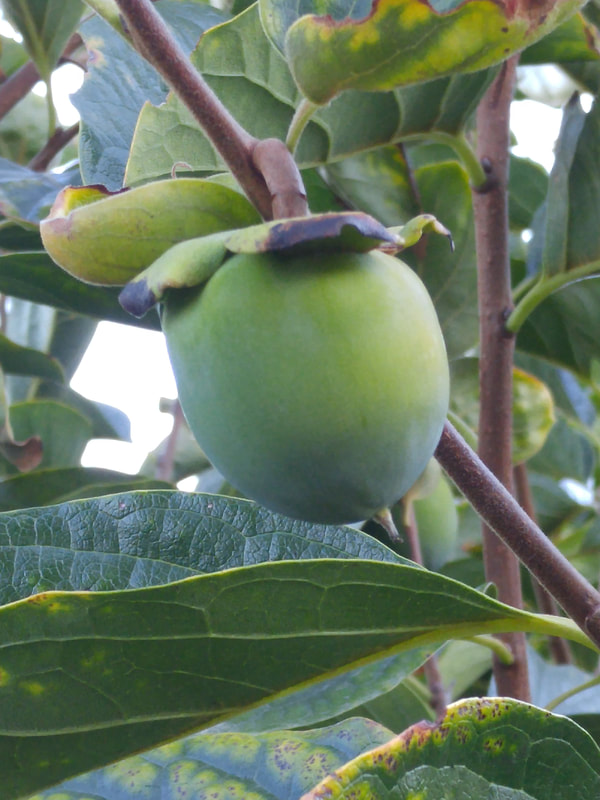
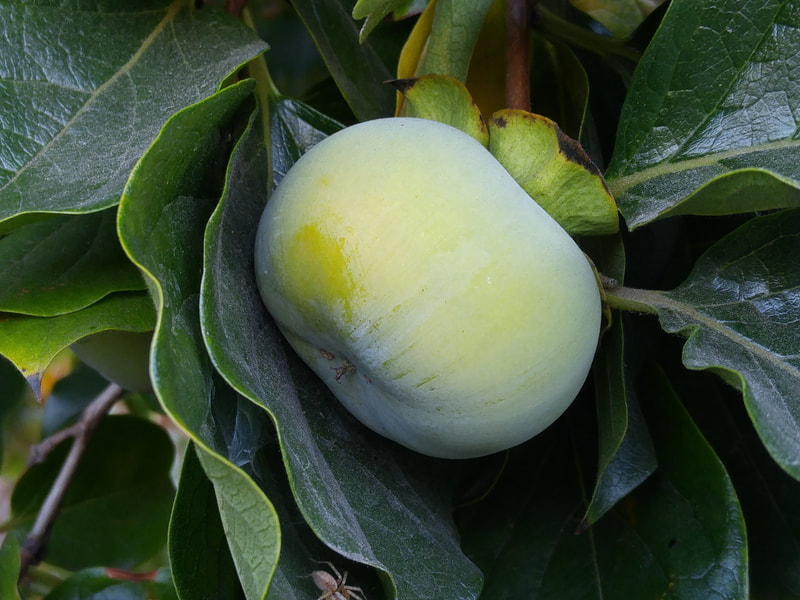
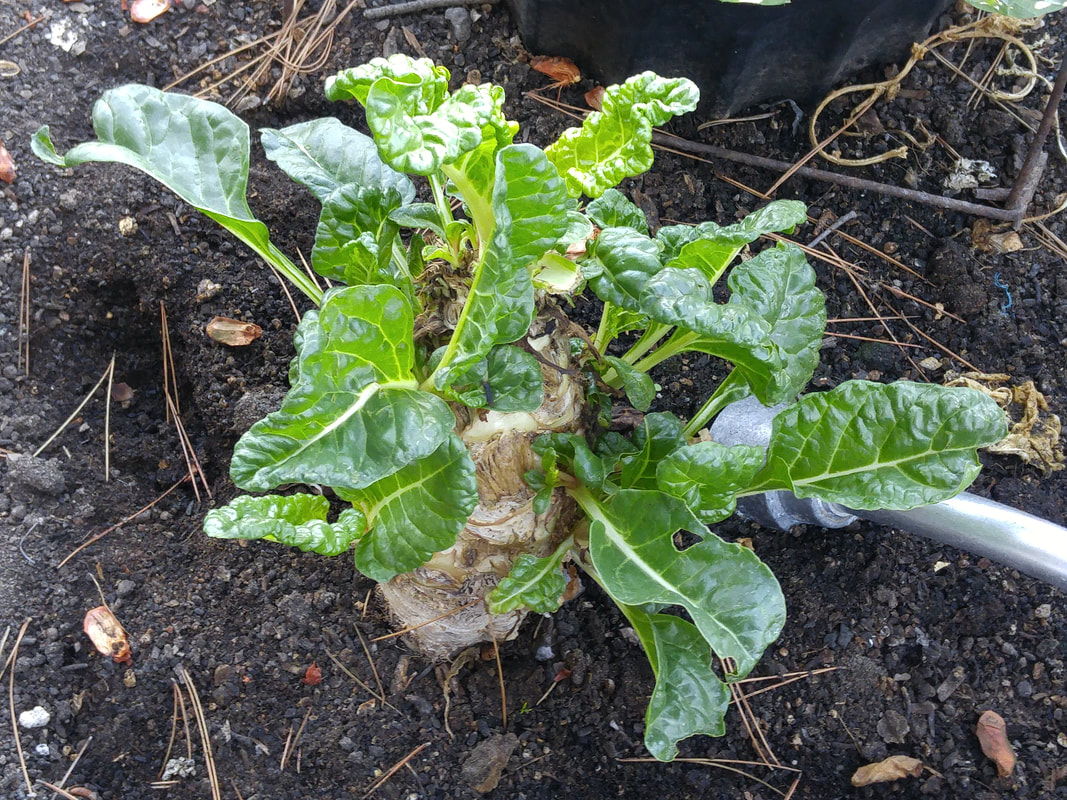
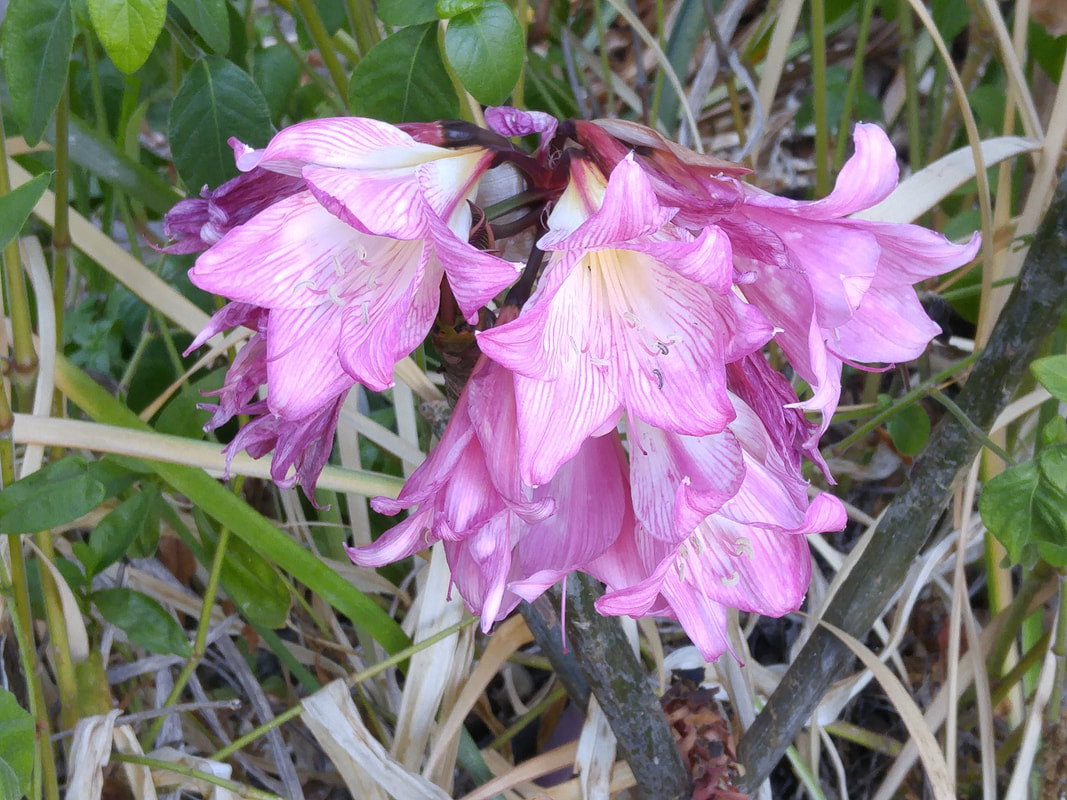
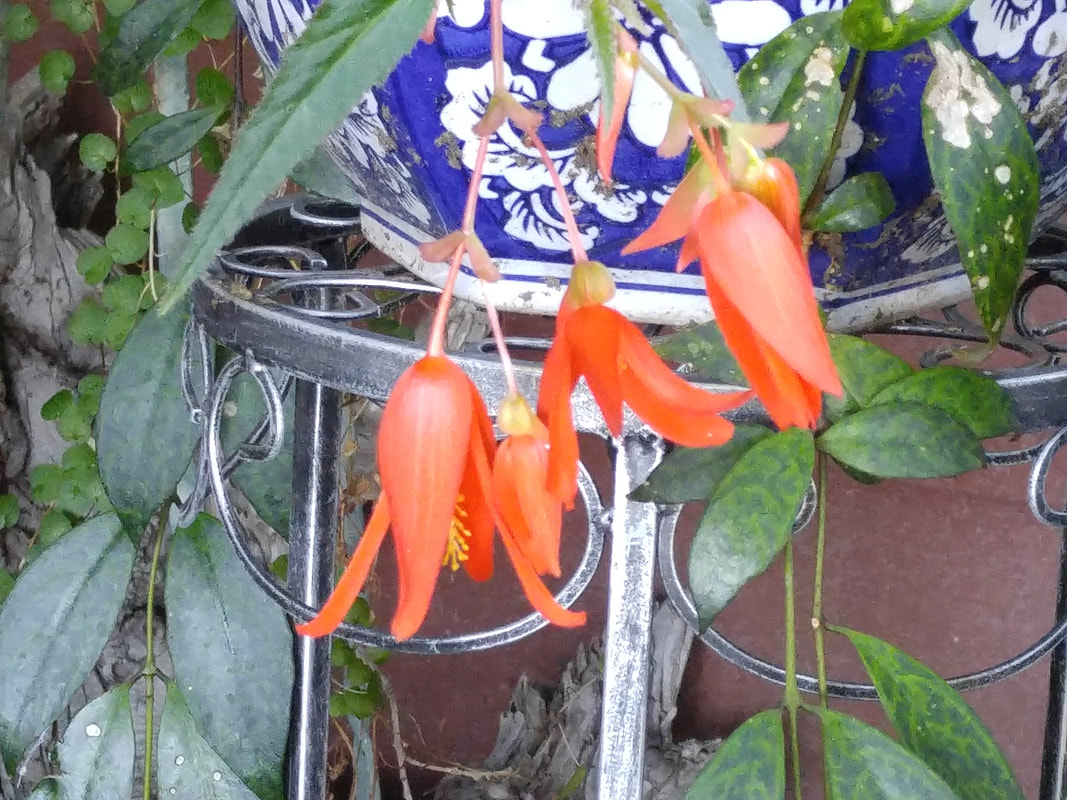
 RSS Feed
RSS Feed